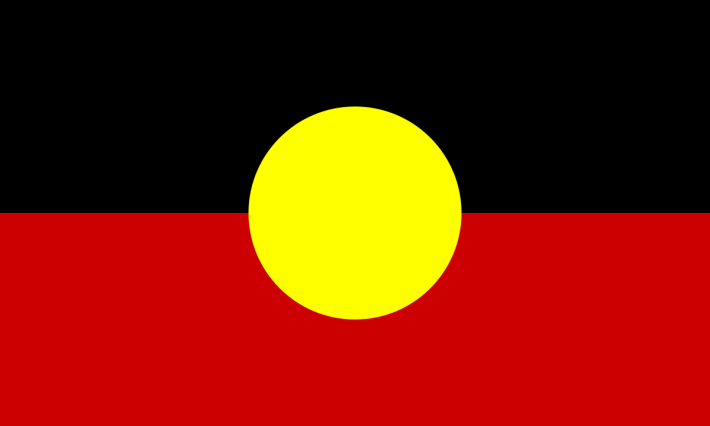Latest updates to Intellectual Property Law
The copyright deal
After lengthy negotiations with Harold Thomas, the flag’s creator and copyright holder, the Aboriginal Flag copyright has been transferred to the Commonwealth. The reported $20.05 million sum required to seal the deal and to be paid by taxpayers includes a payment to Mr Thomas for the copyright and also payments to licensees to extinguish their existing licences, which included estimating the potential revenue over the life of the contracts and reaching agreements with the licencees on appropriate compensation for them relinquishing their exclusive rights. Whilst the exact details of the payments involved are confidential, it is thought to be a 50/50 split.
In a joint media release with the Minister for Indigenous Australians, Prime Minister Scott Morrison announced that the Federal Government had “freed the Aboriginal flag for Australians”.
Going forward, the Aboriginal Flag will be managed in a similar fashion to the Australian National Flag, where the use is free as long as the flag is presented in a respectful and dignified way.
Whilst Caroll and Richardson Flagworld will remain the exclusive licensed manufacturer of Aboriginal Flags under the ongoing arrangement covering commercial production, Flagworld will not restrict individuals from making their own flag for personal use.
All Australians are now able to put the Aboriginal Flag on “apparel such as sports jerseys and shirts, it can be painted on sports grounds, included on websites, in paintings and other artworks, used digitally and in any other medium without having to ask for permission or pay a fee.”
Ken Wyatt emphasised that “all Australians can freely display and use the flag to celebrate Indigenous culture. Now that the Commonwealth holds the copyright, it belongs to everyone, and no one can take it away.”
Even though he has relinquished his copyright, Harold Thomas will retain his moral rights.
The Commonwealth has further agreed that all future royalties received from Flagworld flag sales will be going to National Aborigines and Islanders Day Observance Committee (NAIDOC). The Federal Government will also provide an annual scholarship in honour of Mr Thomas worth $100,000 to further the development of Indigenous governance and leadership. The National Indigenous Australians Agency (NIAA) will be tasked with creating an online history and education portal about the flag. An original painting by Mr Thomas, celebrating the flag’s 50th anniversary and the historic transfer of copyright, will be displayed in a prominent location by the Federal Government.
The flag’s history
Harold Thomas, the son of a Luritja woman and a Wombai man, was born in Alice Springs in 1947. A member of the Stolen Generations, he was taken from his family as a 7-year-old boy and sent to an Anglican institution for Aboriginal boys. Four years later he was taken in by a family and raised in South Australia. In 1969, he became the first Indigenous person on record to graduate from an Australian arts school. A year later, in 1970, he created the flag, which was first flown at a land rights rally in Adelaide in July 1971. The flag has also been used in Canberra’s Aboriginal Tent Embassy since 1972.
Cathy Freeman caused a stir when she wrapped herself in both the Australian National Flag and the Aboriginal Flag during her victory lap at the 1994 Commonwealth Games.
In 1995, then Prime Minister Paul Keating decided to make the Aboriginal Flag a national flag (and subsequently also the Torres Strait Islander flag) under the Flags Act 1953 (Cth).
Following the Federal Government’s proclamation, flag creator Harold Thomas sought legal recognition of his ownership of the copyright in the design of the Aboriginal Flag. Other claimants came forward, asserting they were the artists behind the flag. In 1997, the Federal Court of Australia officially recognised Thomas as the sole author of the flag which meant that he could assign licences: Thomas v Brown [1997] FCA 215; 37 IPR 207.
Why did the flag need to be “freed”?
In mid-2019, WAM Clothing, which had entered into a licensing agreement with Harold Thomas in 2018, sent a cease and desist notice to Aboriginal-owned company “Spark Health” which also runs a line of clothing called “Clothing the Gap”, to stop the company from featuring the flag on any of their apparel.
Thomas had also entered negotiations with major sporting codes, including the NRL and the AFL, to licence the flag on their one-off Indigenous round jumpers.
WAM Clothing is part-owned by Ben Wooster, whose previous company, Birubi Art, was fined a record $2.3 million by the Federal Court after finding it had breached consumer law by selling fake Aboriginal art made in Indonesia: Australian Competition and Consumer Commission v Birubi Art Pty Ltd (in liq) (No 3) [2019] FCA 996; (2019) 374 ALR 776.
The notion that a non-Indigenous company would be able to control the Aboriginal Flag, even through a legal agreement with flag creator Thomas, angered many and Laura Thompson, business owner of “Clothing the Gap” founded the #freetheflag movement. Initially it gained movement on social media and attracted some of Indigenous Australia’s biggest sporting stars, such as Nova Peris and Michael Long.
By mid-2020, major sporting codes became involved and the AFL announced that it would no longer paint the flag on the ground as Indigenous players preferred the competition not to pay the licence fees if other Indigenous Australians, Indigenous businesses with less market power and community groups were denied the opportunity because of the commercial terms sought by the licensee.
Some activists urged the Government to compulsorily acquire the flag.
Minister for Indigenous Australians Ken Wyatt asserted that it “would be an affront to every artist and Aboriginal person in this country” if such an extraordinary step was taken, especially as Australia has had a long history of Aboriginal art being stolen or appropriated.
Ken Wyatt instead started a lengthy negotiation process with flag creator Harold Thomas which ultimately resulted in the copyright transfer.
Simultaneously, a parliamentary inquiry into the flag’s legal standing was set up to look into the copyright and licensing arrangements. Indigenous Labor senator Malarndirri McCarthy chaired the Senate Select Committee. The inquiry’s final report, released in October 2020, concluded that WAM Clothing’s approach to enforcing its rights was “heavy-handed (yet entirely legal)”. In the report's foreword, McCarthy wrote that Thomas declined invitations to address the inquiry, citing “confidential negotiations under way with the commonwealth government”.
Reactions to the copyright deal
Laura Thompson, convenor of the #freetheflag campaign, deemed the copyright transfer an enormous win for the movement: “Public advocacy has paid off. The flag is now back in the public domain where it belongs as the public piece of property that all flags should be.”
Labor senator Malarndirri McCarthy states that questions remain and that she would seek answers about how future arrangements would operate.
Two days after the Morrison Government’s announcement, Wayne Gregory, Managing Director of Carroll & Richardson Flagword released his own media release, titled “Aboriginal Flag - All Is Not What It Appears. Don’t Let The Facts Get In The Way Of A Good Story”. Flagword insisted that the Government’s announcements had been “seriously misinterpreted in media reporting and community reaction”. The company was keen to assert that the exclusive licence to “manufacture, promote, advertise, distribute the Aboriginal flag, banners, pennants and bunting cannot be reproduced by anyone other than the exclusive licencee. Individuals can make their own flag for personal use, but such flags cannot be sold or given away to others as this infringes the licence which is held by Carroll & Richardson Flagworld.”
In a opinion piece titled “I created the Aboriginal flag as a symbol of unity and price”, published in the Sydney Morning Herald and the Age on the eve of the Federal Government’s announcement, flag creator Harold Thomas asserted “the flag was never intended to be a political platform” and that it was rather a “deeply personal piece of artwork”. His wish is that in future, “the flag will remain, not as a symbol of struggle but as a symbol of pride and unity.” He also indicates that he is not yet fully ready to release his grip on the flag entirely as he states that prior to assigning copyright, he created an authentic digital representation of the flag, minted as a non-fungible token (NFT) in December 2021, to commemorate the 50th year of the flag. “I will hold the NFT on an ongoing basis, on behalf of Indigenous communities.”

